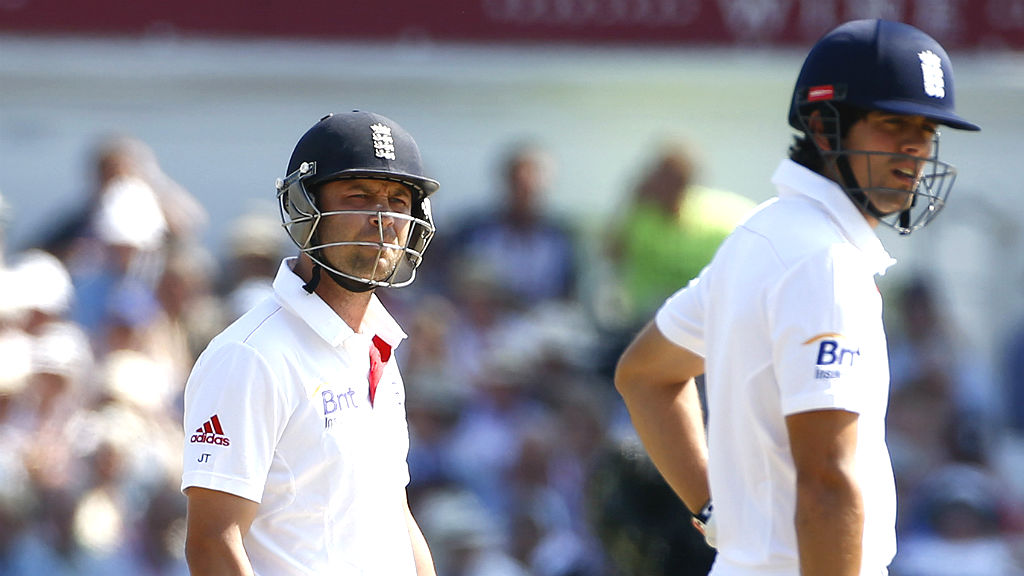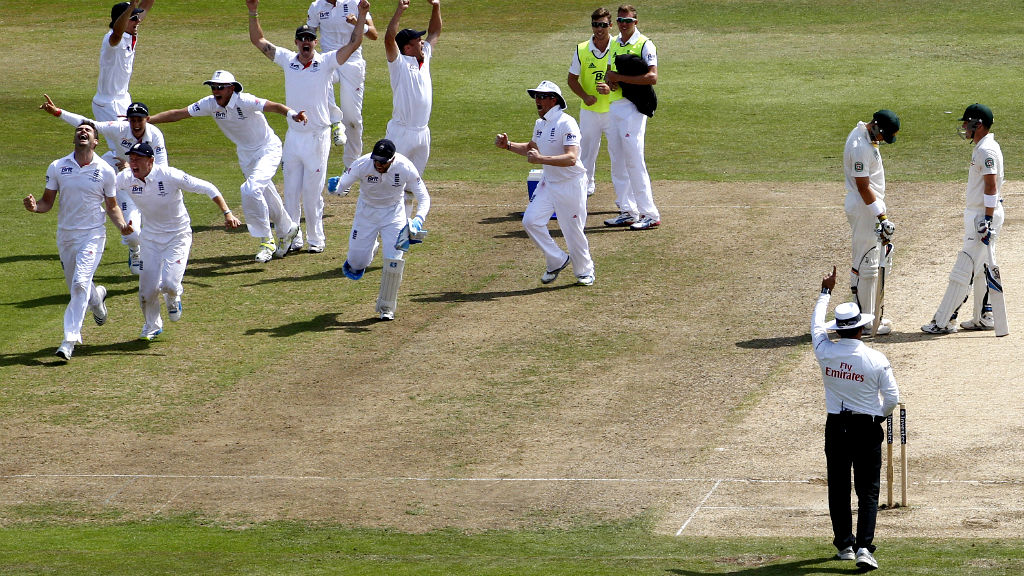Cricket and technology – is it worth the trouble?
As the second Ashes test opens at Lord’s, the cricket world will be hoping the controversial decision review system (DRS) does not have quite such a central part to play as it did at Nottingham.

It was meant to put an end to the interminable debates over umpiring decisions and take the heat out of on-field confrontations between rival players, writes Malcolm Boughen.
Well, on the evidence of the first Ashes Test at Trent Bridge, that went well, didn’t it?
Correct decisions wrongly overturned, incorrect decisions left to stand and a thrilling, hard-fought test match ending in uncertainty as players and spectators alike wait while a man sits in front of a TV monitor somewhere in the bowels of the stands, trying to decide if there is a faint mark on a blurry black-and-white image and turning up the volume to check whether he can hear the slightest click of bat edge on ball that was missed by the on-field umpire.
The game’s governing body, the International Cricket Council (ICC), has defended the use of DRS, saying it improved decision-making by 5 per cent at Trent Bridge. It says the umpires made seven mistakes out of the 72 decisions they gave, but that four of these were corrected on referral. The obvious question that flows from that is: “Why not all seven?”
More controversy
When the first-ever photo-finish was recorded just over 100 years ago in the 1500 metres at the 1912 Stockholm Olympics, no-one could possibly have imagined that the use of technology would actually increase the controversy over settling sporting disputes.
The modern-day Hawk-Eye technology was developed in 2001 and used in Channel 4’s coverage of the Ashes test series that year. It has been successfully introduced to supplement line judges in tennis, while video referees have been given ever more powers in settling disputes in rugby union.
Even the Premier League is finally introducing goal-line technology from the beginning of the coming season. But on last week’s evidence maybe football’s administrators are wondering if they should think again.
Wrong calls
That final umpiring review on Sunday – requested by England when umpire Aleem Dar gave Brad Haddin not out (see image below) with Australia just 15 runs short of an historic win – turned out to have been the right call. Haddin admitted later that he had edged James Anderson’s delivery to wicket-keeper Matt Prior, but – like Stuart Broad before him – was not planning to admit it unless he was given out.
But what had gone before can hardly give the teams too much confidence as they move on to Lord’s.
Brad Haddin admitted later that he had edged James Anderson’s delivery, but was not planning to admit it unless he was given out.
The first questionable decision by video umpire Marais Erasmus – not giving Australia’s last man, Ashton Agar, out stumped when he had made just six – arguably laid the foundations for the game to become the thriller it turned out to be. Few, apart perhaps from the England team, would have wanted to miss out on that wonderful innings of 98 by the 19-year-old – a record for a test number 11.
But Erasmus’s next error – overruling Dar to give Jonathan Trott out lbw first ball (see top image) when the on-field umpire clearly felt he had heard an inside edge before the ball struck the batsman’s pad – could have tilted the game overwhelmingly towards the Australians and left a very bitter taste in English mouths.
It was a combination of a gritty innings from Ian Bell and a third umpiring howler that put England back in the game. This time it was Dar – rather than Erasmus – who erred, failing to give Stuart Broad out when he clearly edged to slip. But therein lay the real problem with the use of video technology in cricket: the way it is being implemented.
Read more: six things to know about the Ashes

Incorrect challenges
The rules agreed by the ICC state that each team can make two incorrect challenges to an umpiring decision in each innings before they lose the right to challenge. If they challenge and get a decision overturned they do not lose one of those “lives”.
But the Australian captain, Michael Clarke, had already made two incorrect challenges, so could not ask Erasmus to adjudicate on this one. And Erasmus had no power tell Dar what he had missed. So now it was the Australian team left fuming.
And the Aussies had another reason to be unhappy with the use of the technology. While the “hot spot” thermal imaging records even the faintest heat signature of ball against bat or pad, the use of the Hawk-Eye system in adjudicating lbw decisions inevitably brings in an element of prediction in where the ball was travelling when it hit the pad.
The use of the Hawk-Eye system in adjudicating lbw decisions inevitably brings in an element of prediction.
The ICC therefore introduced the concept of “umpire’s call”, whereby the video umpire will uphold the decision of his on-field colleague if the Hawk-Eye projection suggests the ball would just clip the outside of off or leg stump.
Twice the Australians had reviews turned down when the on-field umpire had given English batsmen not out – even though on Hawk-Eye the ball appeared to be clipping the stumps. Not only did the batsmen get the benefit of the doubt, the Australians lost one of their challenges each time.
But they lost out, too, when Chris Rogers in the first innings and Shane Watson in the second were given out lbw by the on-field umpire and the decisions were upheld by Erasmus under “umpire’s call”. Again the balls looked to be just clipping the stumps. If the on-field umpire had given the batsmen the benefit of the doubt, Erasmus would have had to follow suit.
Tactical advantage
There have been calls for DRS to be taken completely out of the players’ hands. Captains have tended to use their challenges to seek tactical advantage, trying to overturn marginal decisions, rather than to correct obvious howlers.
If, instead, the on-field umpires could consult their video colleague when they weren’t sure about a decision – or the video umpire could step in when he spotted an obvious error, there would be better outcomes all round, it is argued.
But for now, Marais Erasmus will probably be grateful to be swapping the padded armchair for the more familiar white jacket out in the middle at Lord’s, as New Zealander Tony Hill takes on the video role. And with all eyes on the endless replays that accompany televised sport these days, all concerned will be hoping that this time DRS settles controversies, rather than inspiring them.